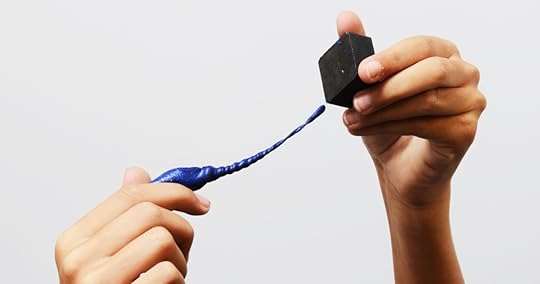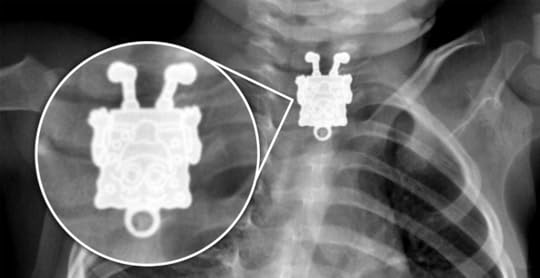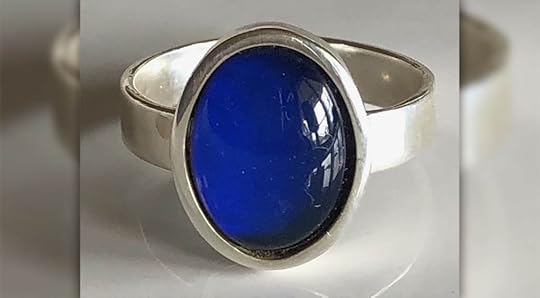Ripley Entertainment Inc.'s Blog, page 93
April 12, 2022
Trilo-BITES: The World’s Earliest Cases Of Cannibalism
Featured in Ripley's Believe It or Not!

Russell Bicknell, a paleontologist at Australia’s University of New England, had a mystery on his hands. After half a decade spent examining trilobite fossils from the Emu Bay Shale formation located on South Australia’s Kangaroo Island, a gruesome tale had emerged. The formation contained two trilobite species from the same genus: Redlichia takooensis and Redlichia rex. But a shared genus was where the similarities ended with these two marine critters.
While Redlichia takooensis was a deposit feeder, chowing down on particles that gathered on the ocean’s floor, Redlichia rex had a more sinister modus operandi as a larger, predatory oceanic arthropod. It came as little surprise, then, that R. takooensis fossils showed clear evidence of bite marks from R. rex. But what puzzled Bicknell were bite marks found on other R. rexes. As the paleontologist dug deeper, he soon realized he was staring at the world’s earliest case of cannibalism.
If the Bite FitsTrilobites first showed up in the fossil record 541 million years ago. And the fossils Bicknell examined in the Emu Bay Shale formation flourished on the Cambrian seafloor. The stout arthropods represented a tasty treat, but only for those capable of biting through their thick exoskeletons. These exoskeletons would come in handy in other ways. You see, unlike softer tissues, the hard outer shells fossilized easily, which explains why the fossil record contains such an abundance of these marine animals.

Of course, this begs the question: Which animals coexisting with trilobites had the bite capacity to break through their shells? The answer to this question points straight to cannibalism. Or, as Bicknell put it in an interview with Live Science, “There’s not much else in this deposit that has the toolkit, is biomechanically optimized for this kind of thing, and could willingly crunch down on something hard.” Hence, the cannibalism smoking gun.
Trilobite HuntingThat said, scientists still have a lot to learn about trilobites. For example, not much is known about their mouthparts. Bicknell hypothesizes they were far from your average mouth, instead fashioned for the grisly task of same-species hunting. (At least in the case of R. rex.) Bicknell likens their legs to the tools used by human chefs to break open lobster or crab shells. In other words, R. rex was designed solely to take out other arthropods, and they appeared to show no discretion when it came to the species they targeted.

Size comparison of Redlichia rex (larger), and R. takooensis. Credit: Apokryltaros via Wikimedia (CC BY-SA 4.0).
We know this because the fossils at Emu Bay show R. rexes with bites taken out of their abdomens. The location of the wounds suggests these lucky ones managed to get away from their cannibal counterparts. Those who sustained bites to their heads don’t show up in the fossil record of Australia because their bodies got gobbled up, too. Bicknell isn’t completely surprised by trilobites eating other trilobites. After all, he argues, “I would go as far as to say that arthropods have been eating arthropods since the dawn of arthropods becoming arthropods.”
He also hypothesizes that instances of animals eating their own kind date back to time immemorial. Nevertheless, his discovery remains the first example in the fossil record of ancient cannibalism. Or, as he puts it, “What you’re left with is this almost demonstrable record of cannibalism, just short of going back in time and watching it happen.” This just goes to show, long before it was “a dog-eat-dog world,” it was “a trilobite-eat-trilobite world.”
By Engrid Barnett, contributor for Ripleys.com
EXPLORE THE ODD IN PERSON! Discover hundreds of strange and unusual artifacts and get hands-on with unbelievable interactives when you visit a Ripley’s Odditorium!Source: Trilo-BITES: The World’s Earliest Cases Of Cannibalism
CARTOON 04-12-2022
April 11, 2022
CARTOON 04-11-2022
April 10, 2022
CARTOON 04-10-2022
April 9, 2022
CARTOON 04-09-2022
April 8, 2022
Magnetic Slime Robot Could Someday Be Used Retrieve Swallowed Objects
Featured in Ripley's Believe It or Not!

Each year, thousands of children swallow objects not suited for human consumption with no other option but to wait for time — and the digestive system — to work its magic. But that could soon change thanks to the invention of a slimy little magnet.
Researchers from the Chinese University of Hong Kong and the Harbin Institute of Technology published a study on March 25 in Advanced Functional Materials, revealing the creation of a magnetic slime that could potentially be inserted into the human digestive system to fish out foreign objects.
The study gaining traction online on April Fool’s Day and the substance’s odd appearance quickly lead to speculation about its authenticity. However, the blob’s co-creator Li Zhang, a mechanical and automation engineering expert, has confirmed that this malleable magnet is no prank.
Slime Time Live
A robot made of magnetic slime could be deployed inside the body to perform tasks such as retrieving objects swallowed by accident.https://t.co/EYpnx56vNO pic.twitter.com/zA3hMO80xQ
— New Scientist (@newscientist) March 31, 2022
According to the study, Zhang’s scientific concoction is not far off from the glue-and-baking-soda slime recipes children worldwide use to turn their family kitchens into a disaster zone.
Rather than basic household ingredients, however, these slime pros mixed resin polyvinyl alcohol with household detergent borax, adding neodymium magnet particles to control the resulting ooze’s movement.
The resulting product is a “visco-elastic” substance that behaves like a solid when touched quickly and liquid when prodded slowly.
Despite a video in which the slime appears to move autonomously, it’s controlled entirely by external magnets, which, in practice, would be outside the patient’s body, guiding it through the GI system.
What Goes In, Must Come OutFrom LEGO bricks and Barbie shoes to batteries and pennies, children — and adults — swallowing unsavory snacks is just another day at work for most doctors.
In fact, LEGO swallowing is so common that in 2018, six doctors sacrificed their colons for the chance to learn firsthand the effects the miniature builders could do on a child’s system. The results: not much. On average, the pieces passed in only 1.7 days as the doctors carried on with their business.
As always, some people insist on upping the ante and commit to their mishaps, finding ways to shock even the most seasoned medical professionals.

Image courtesy of Dr Ghofran Ageely, Radiopaedia.org. From the case rID: 33663
Some of the more jaw-dropping things people have swallowed would shock even the most seasoned physician, including lighters, a full-sized toothbrush, and a cellphone, some of which were in the patient’s body for upward of a decade!
For smaller items, doctors can use endoscopes to retrieve the foreign object, but in these instances, they are often forced to operate.
Get You a Robot That Can Do BothThough elastic and fluid-based robots that can fit into a tight squeeze already exist separately, those that can do both are few and far between, making this little slime big on potential.
What the slime robot lacks in the ability to act alone, it makes up for with other talents, including self-healing, grasping smaller objects, and conducting electricity. The video shows the full power of the blob as it pulls wires together and navigates narrow passages before being chopped apart, only to pull itself back together.
These versatile traits could lend the slime to other useful tasks, like “circuit switching and repair” and “transporting harmful things.”
Safety First!There are no immediate plans to put the slime to the test in a medical setting, as magnetic particles are definitely just as toxic — if not more so — as any object that would be accidentally ingested.
The researchers added a silica coating for safe insertion into the human body to address these concerns, but there’s still work to be done.
Zhang mentioned the possibility of encapsulating the substance with an additional coating to avoid toxic electrolytes leaking from the magnet before adding that the safety would “strongly depend on how long you would keep them inside of your body.”
The team plans to conduct further research on the slime’s uses and properties, including possibly adding pigment or dye to make it more visually appealing than its current hue, which gives it the distinct appearance of , as Twitter user Dave Walsh so pointedly put it, “magnetic turd.”
By Meghan Yani, contributor for Ripleys.com
EXPLORE THE ODD IN PERSON! Discover hundreds of strange and unusual artifacts and get hands-on with unbelievable interactives when you visit a Ripley’s Odditorium!Source: Magnetic Slime Robot Could Someday Be Used Retrieve Swallowed Objects
CARTOON 04-08-2022
April 7, 2022
The Centuries-Old Cake Recipe Said To Reveal Your Future Spouse
Featured in Ripley's Believe It or Not!

During the late-17th to mid-20th centuries, unwed women in England and America did not swipe right to find a husband. Instead, they baked special “dumb cakes” and followed a stringent ritual that was supposed to give them information about their future spouses. The first reference to this romantic divination practice, which took place for as long as 300 years, dates back to the 1680s, according to Oxford Reference.
A Literal Recipe for LoveThe ritual typically involved three young women, and the process was a bit laborious. Some recipes for the cake required unsavory ingredients such as soot, urine, hair, and nail clippings, but most required water as well as salt, wheat meal, and barley meal (sometimes measured in “egg shells” instead of cups, tablespoons, etc.).
It’s unclear exactly where the tradition started, but at least one historian, Ruth Enda Kelley, firmly believes it has its roots in the Scottish Isle of Lewis, according to Atlas Obscura. The practice may also be tied to a Scottish Highlands tradition in which salty bread is made on Shrove Tuesday, the day before Ash Wednesday, in order to foretell who one’s sweetheart will be in a dream.
Dum cakes were often prepared during certain times of the year that some people believed was most conducive to love divination: Halloween, Christmas Eve, St. Agnes’s Eve (January 20), and midsummer.
A Silent Treatment for Your Treat
On #Midsummer Eve, girls baked tiny ‘dumb cakes’ carved with their initials. The cakes – containing lots of salt & sometimes even soot or urine – were baked in silence. The ghost of the girl’s future husband would then appear & share the cake with her. #FolkloreThursday #Folklore pic.twitter.com/19Fx2xz4Sn
— David Castleton (Author) (@david_castleton) June 21, 2018
A vital aspect of the dumb cake ritual is that the women had to make the cakes in complete silence. If the bakers broke this rule, the spell would be broken, and they wouldn’t get the answers they wanted about their future husbands.
It’s possible this part of the ritual came from a misunderstanding of the Middle English word “dom,” which could mean fate or destiny, but was instead interpreted as “dumb.” The term “dumb” was previously used to describe people who are unable to speak, although that usage is considered outdated and offensive today.
Finding a Husband is a Piece of CakeAfter silently putting the ingredients into the pan, the ritual required each girl to mark her initials in the cake before baking it. When it was fully cooked, the girls would break the cake and maybe take a bite of it before walking backwards to their beds, placing the piece of cake under the pillow.
If the ritual was done correctly, they would supposedly dream about their future husbands. Other versions of the ritual report that the girls would turn the cake once in the oven, and at midnight the future husband would come through the door and point at his intended’s initials on the cake.

An engraving titled “The Love Tests of Hallowe’en” from an 1849 magazine.
The book Mother Bunch’s Closet Newly Broke Open, first published in 1685, describes the desert as a Dutch cake and advises in part: “Either make a mark that you know or set the two first letters of your name on it with a pin or bodkin, but leave such a distance that it may be cut then set it before the fire to bake, but all this while speak not a word.”
Foodie FuturesBelieve It or Not!, cakes aren’t the only food that have been used for divination throughout the years. Instead of your typical scrying bones, Jemima Packington of Bath, England, prefers to use asparagus — a method she calls “asparamancy.” And for those who prefer dairy over veggies, we recommend tyromancy, or the practice of predicting the future with cheese!
By Noelle Talmon, contributor for Ripleys.com
EXPLORE THE ODD IN PERSON! Discover hundreds of strange and unusual artifacts and get hands-on with unbelievable interactives when you visit a Ripley’s Odditorium!Source: The Centuries-Old Cake Recipe Said To Reveal Your Future Spouse
CARTOON 04-07-2022
April 6, 2022
Mood Rings: From ’70s fad and ’90s nostalgia to LCDs and NFTs
Featured in Ripley's Believe It or Not!

Commonly thought of as a novelty toy found in dollar stores and souvenir shops, mood rings began as a groovy ’70s fad that used the same technology as some of our favorite modern-day devices — probably even the screen you’re reading right now!
Moody OriginsIn 1975, two men with no relation to one another had the same aha moment: to create a color-changing ring to delight the masses. Of course, only one mood ring could rule them all.
Changing the channel back to the 1970s, the mood ring was a product of the “Me Decade,” during which Americans embraced individualism over national and political interests for one of the first times in history. With no Facebook, Twitter, Instagram, or TikTok to broadcast oneself, neo-narcissists used the color-changing rings to wear their feelings on their fingers.
Cashing in on this new sense of independence, jewelry designer Marvin Wernick got his idea after observing his doctor friend use thermochromic tape on a patient’s forehead. Meanwhile, the burned-out stockbroker Josh Reynolds came up with his design while studying biofeedback in his spare time, believing it could have wellness benefits.
Since Wernick didn’t patent his idea, and Reynolds (along with Maris Ambats) had better business connections, Reynolds’ became the ringbearer for the sensational trinkets.
Wait, How Much?Upon release, Reynolds sold silver-plated mood rings for a whopping $45 ($250 with inflation) and mood rings made of real gold for $500 ($1,152 with inflation). Despite the high prices, the public became enamored by the mood ring’s proposal. Even celebrities like Barbara Streisand and Sophia Lore got swayed into the hype, promoting mood rings on their fingers. People Magazine added to the intrigue, saying, “The Mood Stone you can trust… Mood Stone reveals all.”

Original “Mood Stone” mood ring. Credit: Moodman001 via Wikimedia (CC BY-SA 4.0)
Reynolds made over $20 million in sales in just one year from his eye-catching product. Unfortunately, his product also caught the eyes of many cheap imitators, which led to a flooded market and Reynolds declaring bankruptcy just two years after the mood ring’s vibrant launch.
This setback was not the end for Reynolds, however, who went from ringmaster to Thighmaster when he released the iconic workout device in 1992.
Coming in Hot!In spite of the craze for mood rings, the science behind them didn’t work as advertised. While the gemstones appeared to be pretty rocks, they were merely cheap plastic. The real magic was within the liquid crystals underneath the gemstone that achieved thermochromism, meaning color would change based on heat.
Based on the mood ring chart below, the gemstone may turn reddish-brown when the wearer is anxious or black when upset. Reynolds believed that the ring would read the wearer’s inner body temperature to determine their mood — but did not account for external heat sources. Scientifically speaking, sweating from excitement or sticking your hand in a pot of boiling water would exhibit the same color change.

Original “Mood Stone” color chart. Credit: Moodman001 via Wikimedia (CC BY-SA 4.0).
Smile, You’re on LCD!The science behind mood rings may not display your emotions as intended, but other forms of liquid crystal technology did create a different type of viewing experience.
Like the mood ring, the liquid crystals in an LCD screen change colors and configurations based on temperature. When you turn on your TV, the voltage from the fluorescent backlights activates the molecules in the crystals that adjust accordingly to whatever is happening on-screen.
LCD technology was founded in 1964 by George Heilmeier. He discovered that his invention could display a higher image quality at less power than a CRT (cathode-ray tube) television. CRTs divided a signal into three electron guns (red, blue, and green) to blast an image onto a phosphor display.

Cathode-ray tube diagram. Credit: grm_wnr via Wikimedia (CC BY-SA 3.0).
On an average 19-inch display, CRTs used 100 watts of power compared to an LCD at 45 watts. While Heilmeier’s discovery was ahead of its time, it would pave the way for the displays of many devices like laptops and smartphones.
Mood Ring SwingsOver the years, Americans have slipped back and forth between selfless and selfish jewelry. While they became more kitsch than cool in the late ’70s, mood rings came back moodier and cheaper than ever in the ’90s, and again in later years thanks to ’90s nostalgia.
In 2022, the liquid crystal technology of mood rings and LCD has come full circle. In partnership with mood ring creator Josh Reynolds, NFT Creative Enterprises has sold a smart wearable NFT of a gold mood ring (along with the real deal) for $65,000. A mood ring with liquid crystals inside of it is now displayable on an LCD screen.
Besides electronics, liquid crystal technology is in color-changing mugs and nail polish. Still, whether a cheap ring or expensive TV, we have liquid crystal technology to thank for the delightful moods LCD products put us in.
By James Whelan, contributor for Ripleys.com
EXPLORE THE ODD IN PERSON! Discover hundreds of strange and unusual artifacts and get hands-on with unbelievable interactives when you visit a Ripley’s Odditorium!Source: Mood Rings: From ’70s fad and ’90s nostalgia to LCDs and NFTs
Ripley Entertainment Inc.'s Blog
- Ripley Entertainment Inc.'s profile
- 52 followers









